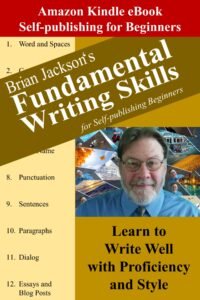In this post, I discuss writing a page turner using two specific techniques; namely, foreshadowing and red herrings.
If you publish books, you want readers to devour your books and eagerly begin reading the next book. In this way, you’ll sell more books quicker. By writing a page turner, you’ll ensure that readers enjoy your book and keep reading right into the next one. Combined with always writing in a series, writing cliff hangers can make you a bestseller.
I conclude this post with a bonus look at the Carrie ending.
What is Foreshadowing?
Foreshadowing is building dread and anticipation by alluding to things that will happen later in your story. By providing hints of intriguing things to happen later in your story, you build excitement to keep on reading. You also build dread and concern, which will keep the reader reading. Consider this example of foreshadowing:
If Mitch had known what the day had in store for him, he would have stayed in bed and never gotten up.
In this example of foreshadowing, we allude to the fact that the story is about to get bad for Mitch, building anticipation and prompting the reader to keep reading.
As Mitch walked out the door, a black cat scurried across his path.
In this example of foreshadowing, I use the bad luck associated with black cats to hint at bad things to come in Mitch’s future.
Use foreshadowing to hint at exciting or dreadful things to come to pique the reader’s interest and keep them reading.
What is a Red Herring?
A red herring is essentially a trick you play on your reader to foul them into incorrect conclusions only so that you can thrill them later by revealing the truth. Red herrings are most often used in mystery stories to make the reader believe that the wrong person committed the murder. Describe characters acting suspiciously or having suspicious pasts so that you can fake the reader into thinking bad of those throw turn out to be good, or at least neutral.
Use red herrings to foul the read into false assumptions only so you can thrill them later by revealing the truth.
The Carrie Ending
A Carrie ending is a nicely sewn up book conclusion that turns suddenly wrong. Use a Carrie ending to conclude your book with something exciting that will prompt the reader into reading the next book in the series.
At the end of the book, Carrie, by Stephen King, the heroine is visiting the grave of Carrie, the bad guy, who is finally dead and buried. However, as the heroine lays flowers on Carrie’s grave, a hand shoots out of the ground to grab her arm. Carrie is not dead after all.
End your book with a shock that shows the book isn’t over after all to keep the reader reading into the next book.
I’ll see you in the classroom,
—Brian


















